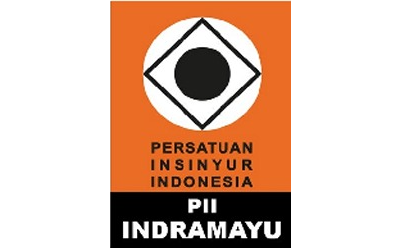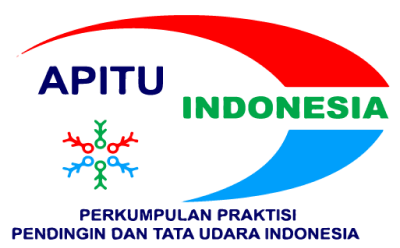PENGUJIAN ALGORITMA YOLO UNTUK DETEKSI CACAT PADA PRODUK HASIL ALUMUNIUM CASTING PADA INDUSTRI OTOMOTIF
Abstract
Full Text:
PDFReferences
Aust, J., & Pons, D. (2022). Comparative Analysis of Human Operators and Advanced Technologies in the Visual Inspection of Aero Engine Blades. Applied Sciences (Switzerland), 12(4). https://doi.org/10.3390/app12042250
Bokovoy, A., Muravyev, K., & Yakovlev, K. (2019). Real-time Vision-based Depth Reconstruction with NVidia Jetson.
Boris Sekachev. (2023). Computer Vision Annotation Tool (CVAT) (2.8.2). Github. https://doi.org/10.5281/zenodo.4009388.
Bunyamin, H. (2020, August 1). Micro-average == Weighted macro-average. Https://Hbunyamin.Github.Io/Ml-2/Micro_and_Weighted_Macro_Averages/.
Chen, W., Li, Y., Tian, Z., & Zhang, F. (2023). 2D and 3D object detection algorithms from images: A Survey. In Array (Vol. 19). Elsevier B.V. https://doi.org/10.1016/j.array.2023.100305
Gao, F., Lin, J., Ge, Y., Lu, S., & Zhang, Y. (2020). A Mechanism and Method of Leak Detection for Pressure Vessel: Whether, When, and How. IEEE Transactions on Instrumentation and Measurement, 69(9), 6004–6015. https://doi.org/10.1109/TIM.2020.2969300
Gladkoff, S., Sorokina, I., Han, L., & Alekseeva, A. (2021). Measuring Uncertainty in Translation Quality Evaluation (TQE). http://arxiv.org/abs/2111.07699
Gowardipe, A. N., Deshmukh, A., Dimble, P., Deshmukh, A., & Garje, N. (2008). Leakage Testing Machine. International Research Journal of Engineering and Technology, 3957. www.irjet.net
Hidayatullah, P. (2021). Buku Sakti Deep Learning Computer Vision Menggunakan YOLO untuk Pemula.
Jeon, J., Jung, S., Lee, E., Choi, D., & Myung, H. (2021). Run Your Visual-Inertial Odometry on NVIDIA Jetson: Benchmark Tests on a Micro Aerial Vehicle. IEEE Robotics and Automation Letters, 6(3), 5332–5339. https://doi.org/10.1109/LRA.2021.3075141
Lindsay, G. W. (2021). Convolutional neural networks as a model of the visual system: Past, present, and future. Journal of Cognitive Neuroscience, 33(10), 2017–2031. https://doi.org/10.1162/jocn_a_01544
Mrinal Walia. (2022, October 31). Overfitting in Machine Learning and Computer Vision. Roboflow Blog. https://blog.roboflow.com/overfitting-machine-learning-computer-vision/
Pauline, E., Carreño-Alvarado, & Meza, G. R. (2020). Water Leak Detection by Termographic Image Analysis, In Laboratory Tests. 15. https://doi.org/10.3390/ecws-4-06440
Putri, A. S., & Primananda, F. (2021). Quality Control on Minimizing Defect Product on 20 OE Yarn. Jurnal Ilmiah Teknik Industri, 20(1), 81–88. https://doi.org/10.23917/jiti.v20i1.12443
Qi, M., Xu, Y., Li, J., Kang, Y., & Wulabieke, Z. (2021). Microstructure refinement and corrosion resistance improvement mechanisms of a novel Al-Si-Fe-Mg-Cu-Zn alloy prepared by ultrasonic vibration-assisted rheological die-casting process. Corrosion Science, 180. https://doi.org/10.1016/j.corsci.2020.109180
Suder, J. (2022). Parameters evaluation of cameras in embedded systems. Przeglad Elektrotechniczny, 98(9), 216–219. https://doi.org/10.15199/48.2022.09.50
Verma, U., Kalia, A., & Sood, S. (2024). A Comparative Analysis of Deep Learning Based Object Detection Models. In International Journal of Scientific Research & Engineering Trends (Vol. 10, Issue 3).
Wang, C.-Y., Yeh, I.-H., & Liao, H.-Y. M. (2024). YOLOv9: Learning What You Want to Learn Using Programmable Gradient Information. http://arxiv.org/abs/2402.13616
Yang, J., Li, S., Wang, Z., Dong, H., Wang, J., & Tang, S. (2020). Using deep learning to detect defects in manufacturing: A comprehensive survey and current challenges. In Materials (Vol. 13, Issue 24, pp. 1–23). MDPI AG. https://doi.org/10.3390/ma13245755
DOI: https://doi.org/10.31884/jtt.v10i2.664
Refbacks
- There are currently no refbacks.
Copyright (c) 2024 JTT (Jurnal Teknologi Terapan)
 Creative Common Attribution-ShareAlike 4.0 International (CC BY-SA 4.0)
Creative Common Attribution-ShareAlike 4.0 International (CC BY-SA 4.0)













